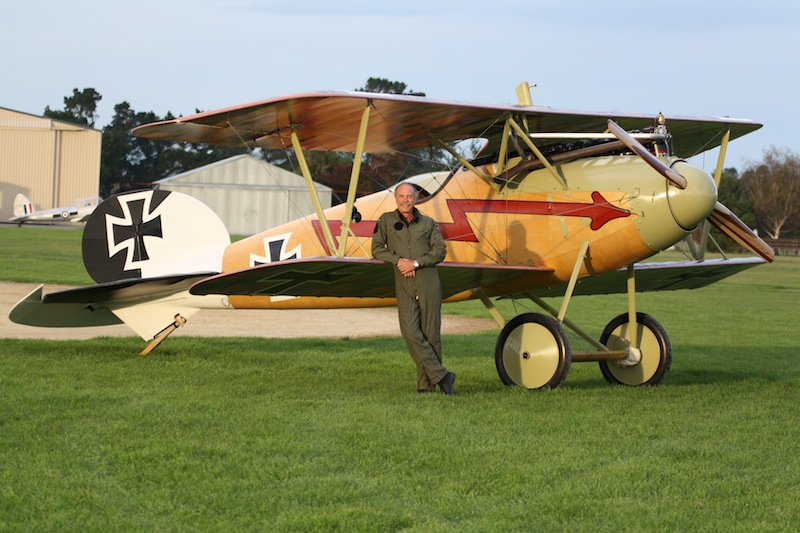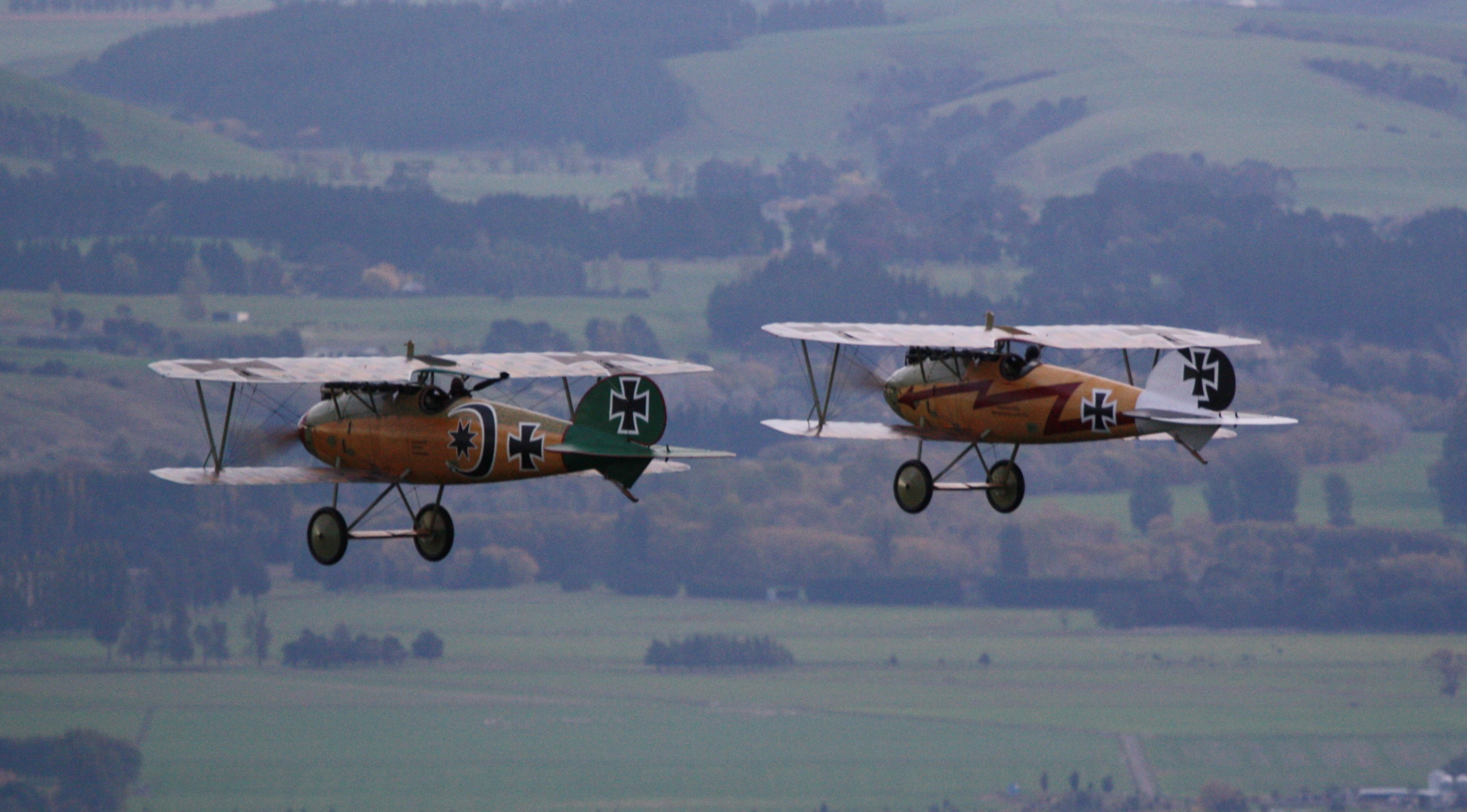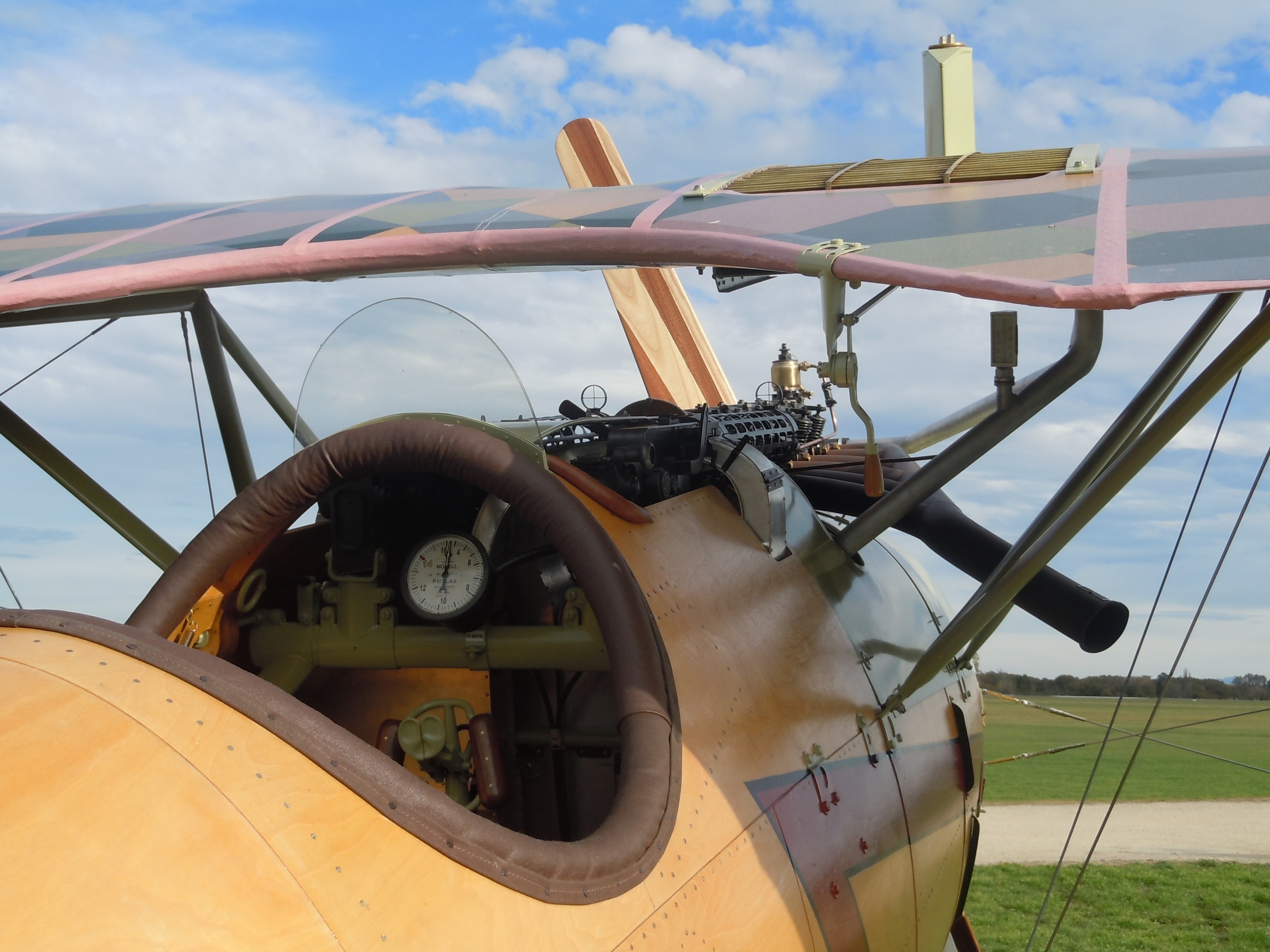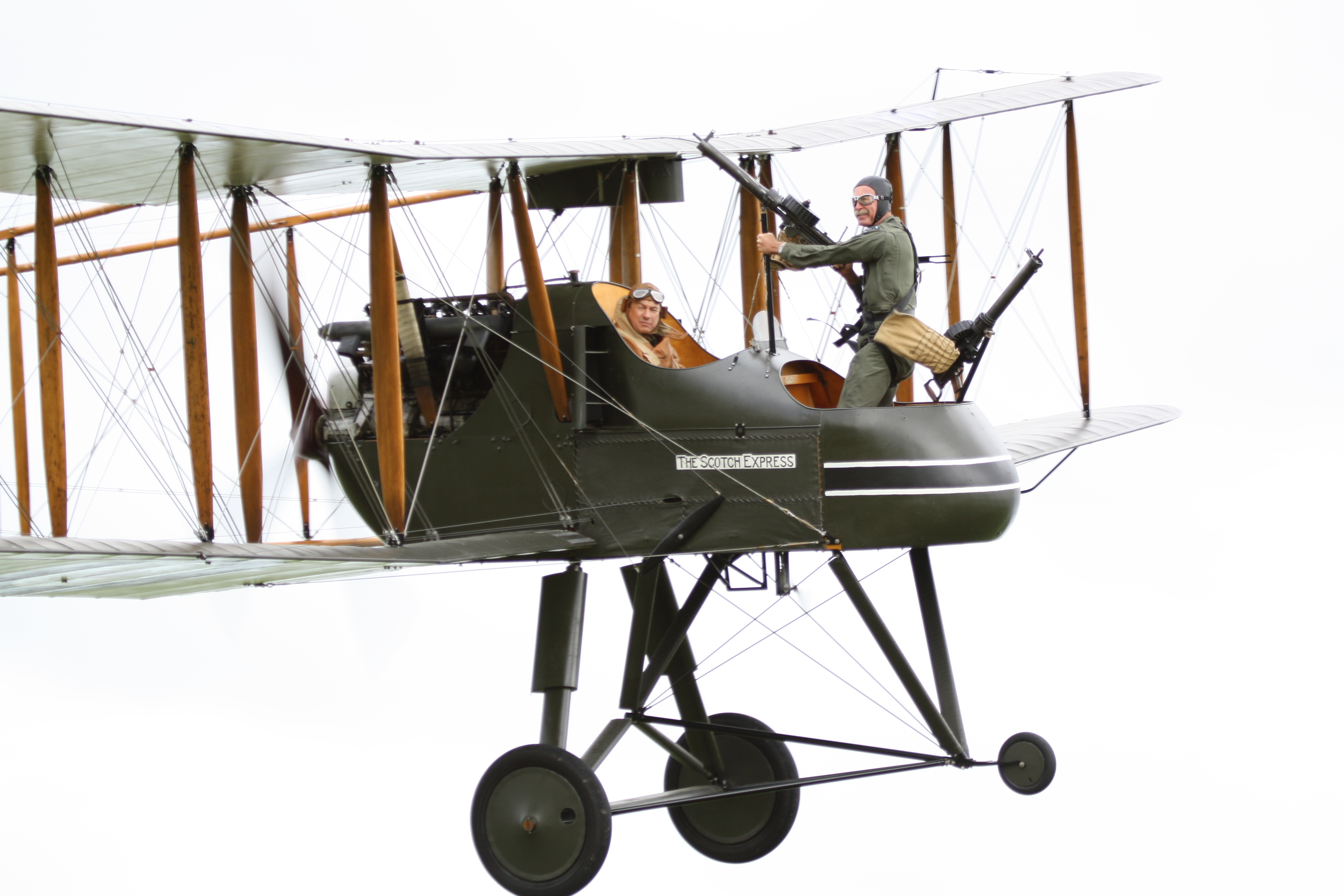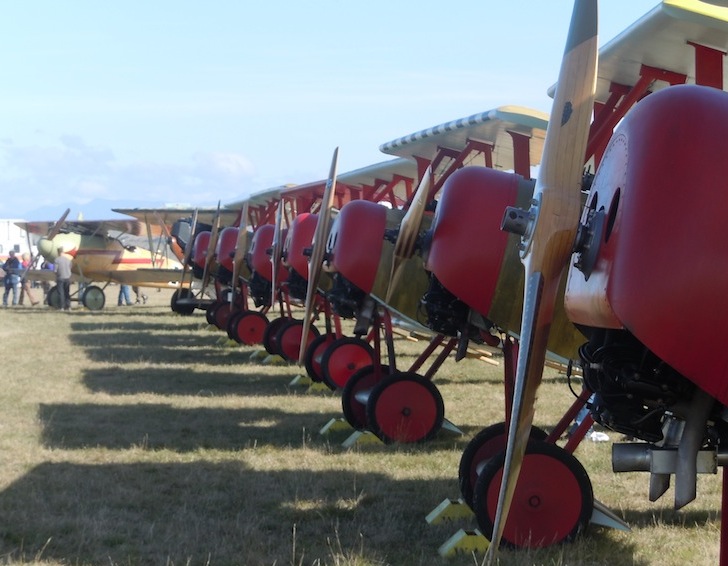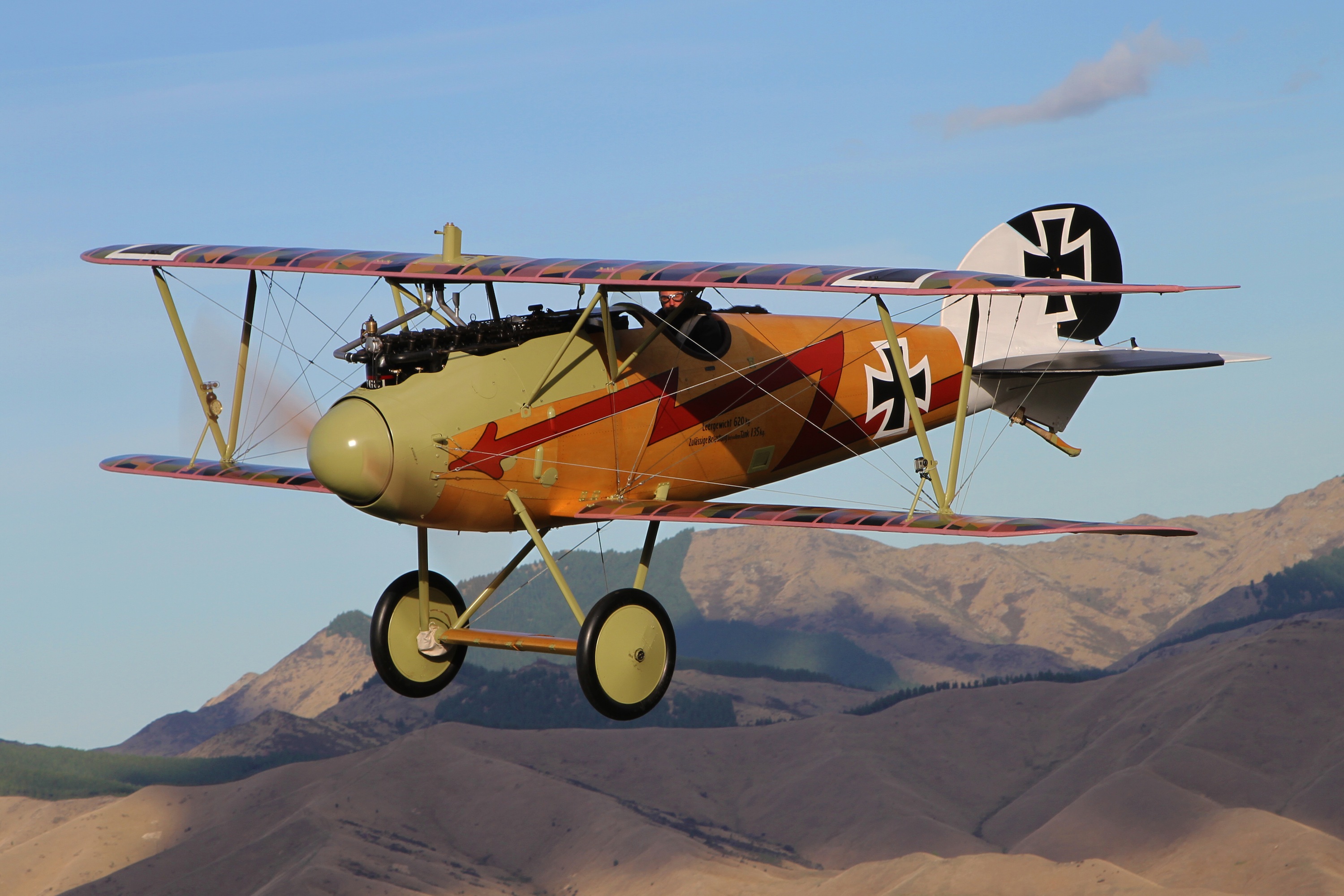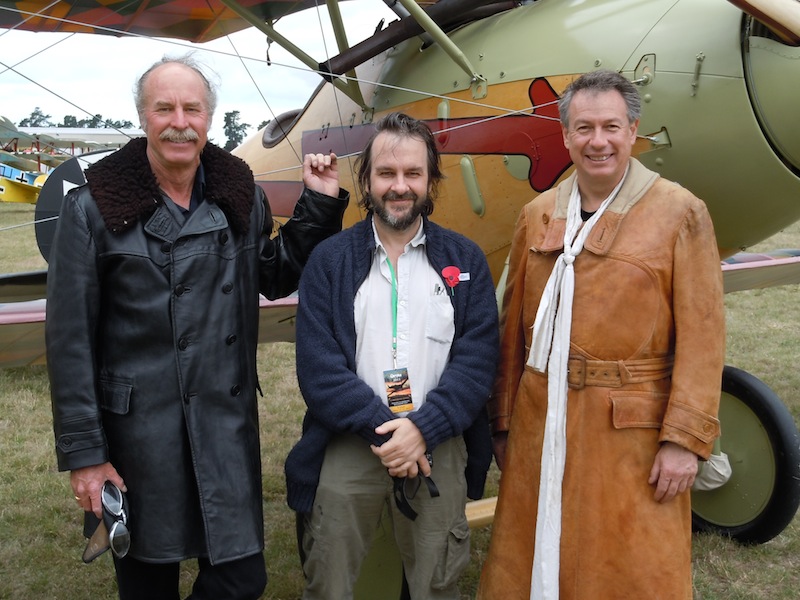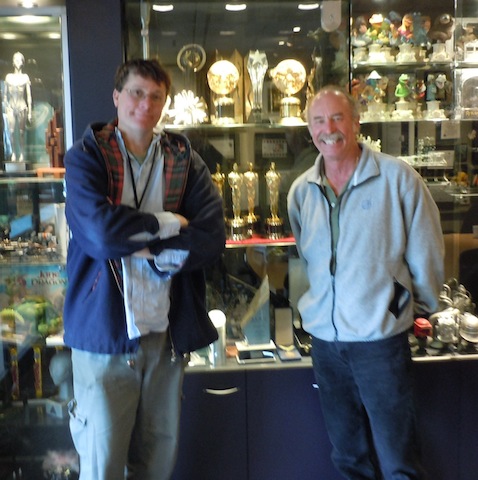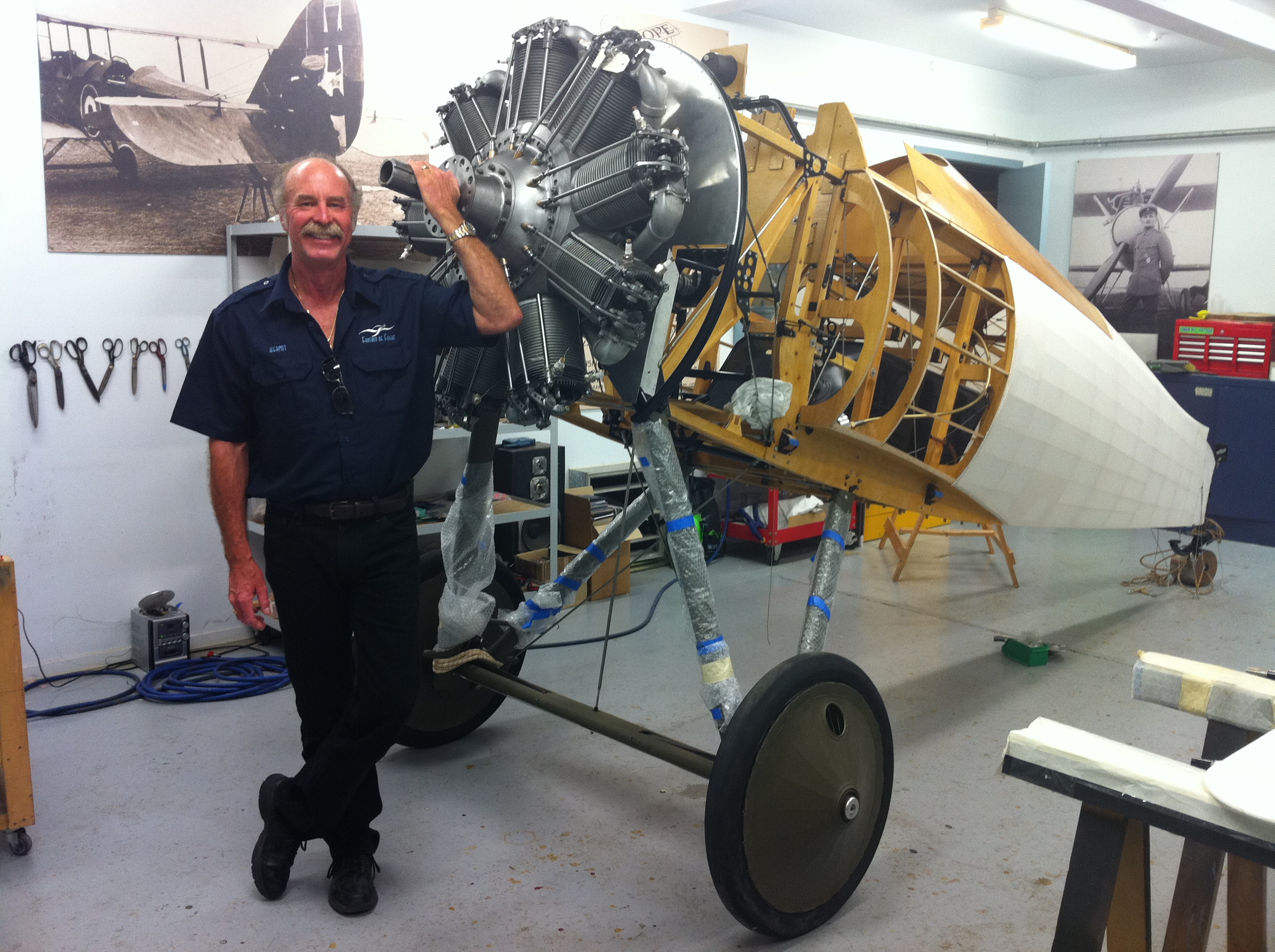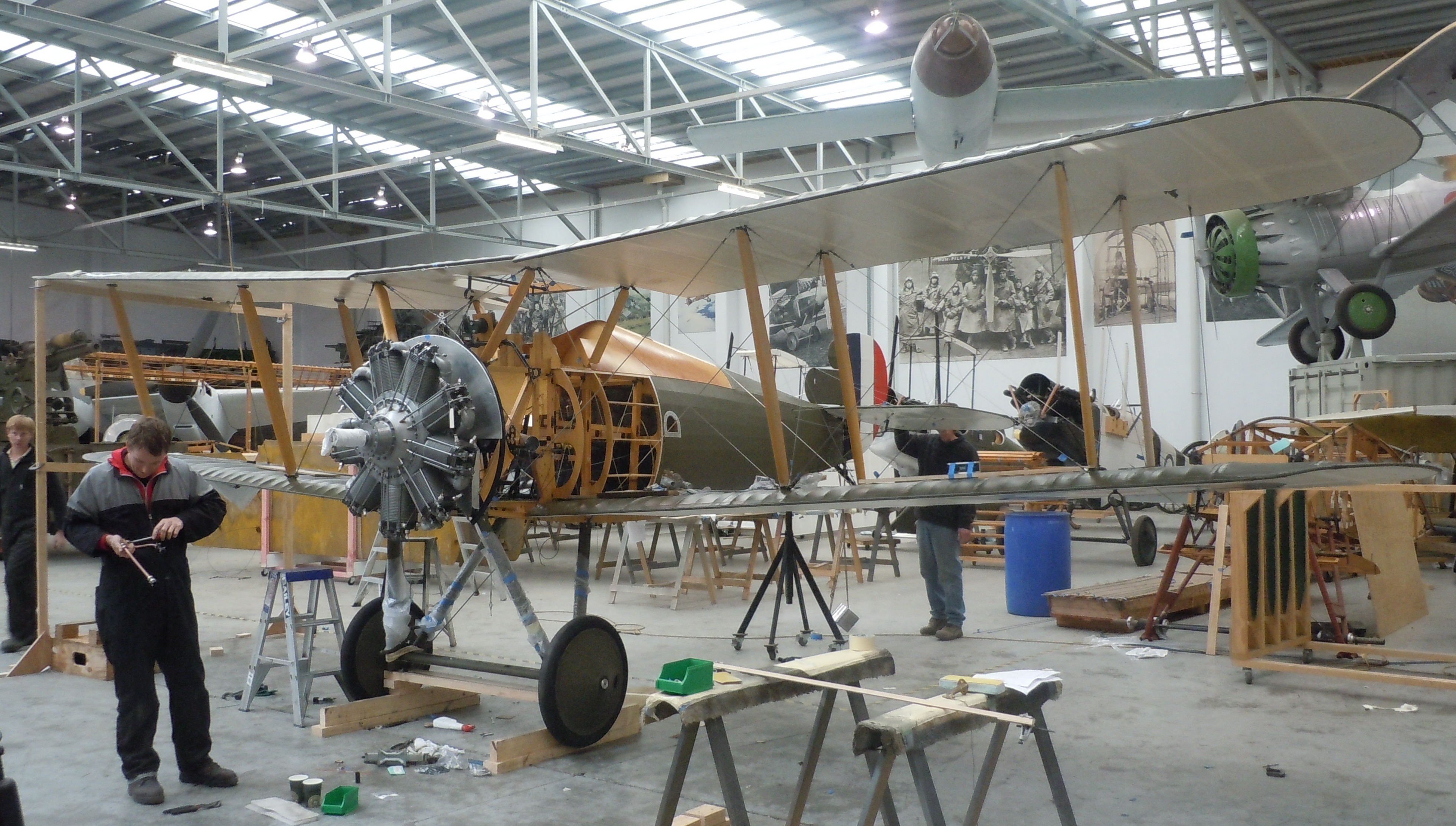After my annual trip to Australia for meetings, I stopped in to see my friend Gene DeMarco with the Vintage Aviator Ltd. (TVAL) in Wellington, New Zealand. I went to check up on the status of a couple of projects they had been working on as part of a trade I made with his boss Peter Jackson and hopefully participate in the upcoming Omaka Airshow. I met Peter years ago in New Zealand through Gene and he has since come to visit Fantasy of Flight where I gave him a vision tour, looked at my WWI collection, and took him flying in a Stearman. Peter is an avid enthusiast of WWI airplanes and we struck a deal for a trade that involved my original and extremely rare Sopwith 1 1/2 Strutter. Initially I was somewhat reluctant to part with such a rare airplane but he made me an offer I couldn’t refuse. The Sopwith for two new production WWI reproductions using two original engines that I would supply and they overhaul.
The first aircraft completed was a German Albatros D-Va and is an absolutely beautiful piece of art!
I arrived about a week before two of my mechanics did and got a chance to first get checked out in their original prototype. Since Gene had to do the initial test flights for the NZ CAA, I flew the prototype while Gene put some time on mine. A great kid named Bevan Dewes was onsite with a new camera and took some great shots of us flying. What an absolute blast!
The main thing we did during our flights was tighten up the rigging on the prototype, which was way too loose for my tastes, and then proceeded to do the same to mine.
They did a magnificent job on the construction, which included reproducing the original instruments, radiator, seat belts, etc. The original in-line six-cylinder Mercedes engine is a joy to hear and fly behind and with it’s low rpm, sounds like a John Deere tractor! One of the more interesting things about operating it is that you have to twist a screw about every ten minutes on a grease canister mounted in the cockpit to keep coolant from leaking into the engine. It has a rather interesting starting procedure where the mechanic has to climb up on the tire to grab a handle on the engine to lift the cam for starting, which then has to be lowered after the prop is turning! True to the original, there are no brakes and a tailskid. The radiator gauge and cooling shutter handle are outside the cockpit in the slipstream and only add to the whole experiencing of flying this wonderful piece of history!
Once the time was flown off by Gene, I got to start flying it. Soon after, my guys showed up and we all got a chance to play with some of Peter’s other airplanes. While Gene gave rides to my guys, I jumped in a number of other airplanes and joined in the fun.
Not to be one not to partake in the rides, Gene let me play gunner in an Fe-2b they had built using an original Beardmore engine. Oh my God . . . what a blast! Literally! I couldn’t help but not pose for some shots as we did some fly-bys!
The Albatros passed it’s test-flights with flying colors and I was now comfortable in the airplane. We began the disassembly process to take it over to the south island by ferry for the Omaka Airshow. After arriving, everyone pitched in to re-assemble it as preparations for the show began. We took the time to visit the onsite museum, which Peter and graciously supplied with many of his airplanes for display.
My part of the two-day show was to dogfight with Gene in a rotary powered Sopwith Camel as seven Fokker Triplanes made fly-bys in different formations. There were other WWI planes flying as well and it had to have been the biggest group of WWI airplanes flying at one time since WWI! I later got to go up for a photo mission with a helicopter and photographer Gavin Conroy got some unbelievable shots over the countryside.
Although Peter was deep in to filming The Hobbit, he took the time to give everyone a break so he come over and attend the show. I got the chance to visit his VIP Chalet on the flightline where I got to hang out with Peter and some of the actors. While in Wellington, I got to visit the Hobbit set twice, which was a fascinating experience. It’s amazing to see how many people it takes to pull off a major motion picture production like that. The second time, my guys were with me and we got to watch Gandalf (Ian McKellan) do his stuff.
After the show was over, I got to visit with Richard Taylor at the Weta Workshops. Richard and Weta are the genius behind all the computer graphics that support Peter’s endeavors as well as other films. They’ve won many Oscars and awards for their work that includes: Lord of the Rings, King Kong, Avatar, and Chronicles of Narnia to name a few! Richard is working with me on several small projects for Fantasy of Flight and is a great guy.
As if this wasn’t all cool enough, we also got to check up on the second airplane Gene and Peter’s guys are building for me . . . a WWI British Sopwith Snipe with an original Bentley rotary engine! The Snipe was the airplane intended to replace the famous Sopwith Camel at the end of the War and was powered by the most powerful rotary ever built. The Bentley engine has the distinction of being the first engine produced using cast aluminum cylinders with steel liners. Gene’s guys overhauled both my Mercedes for the Albatros and my Bentley for the Snipe.
When I first arrived, the Snipe was just being covered.
By the time we left, it was painted and being rigged for assembly. Amazing! Many small items still need to be accomplished before it’s ready to fly but it will make a great addition to the Fantasy of Flight collection.
Now, was that a cool trip or what? When I grow up . . . I want to be me!
Kermit
